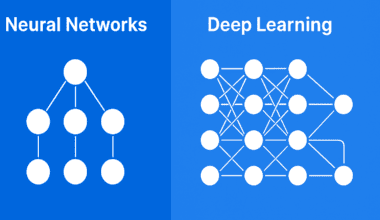Summary: Measures of dispersion in statistics show how data values spread around a central point. They complement averages and help assess variability, consistency, and reliability. Tools like range, variance, and standard deviation are crucial for statistical analysis and are foundational skills in data science and analytics.
Introduction
Ever wondered why two people with the same average marks can perform so differently? That’s where measures of dispersion in statistics step in! These tools help us understand how spread out or scattered data really is.
In this blog, we’re diving into the world of data spread—not in a boring way, promise! You’ll learn what dispersion means, why it matters, and how to measure it without needing a PhD. Our goal is simple: by the end, you’ll be able to confidently talk about data variability, even if you’re just starting out. Ready to untangle the numbers with me? Let’s go!
Key Takeaways
- Measures of dispersion show how much data values deviate from the central tendency.
- They include range, variance, standard deviation, mean deviation, and quartile deviation.
- Dispersion provides insights into data consistency, outliers, and reliability.
- These measures are essential for accurate analysis and decision-making in data-driven fields.
- Mastering them builds a strong foundation for data science careers and statistical modeling.
What is Dispersion in Statistics?
Dispersion means how spread out the numbers in a group of data are. It shows how far the values are from the average (mean). If the numbers are close to each other, the dispersion is low. If they are far apart, the dispersion is high.
Dispersion helps us understand how consistent or varied the data is. For example, in test scores, it shows whether most students scored around the same mark or very differently. Common ways to measure dispersion include range, variance, and standard deviation, each showing spread in a different way.
What Are Measures of Dispersion?
Measures of dispersion tell us how spread out or scattered the data values are in a dataset. They help us understand whether the numbers are close to each other or far apart.
These measures help us see the full picture of the data, not just the average. For example, if two datasets have the same average but different spreads, their stories can be very different.
We use them in statistics to study patterns, compare data, and make better decisions based on how data values vary.
Characteristics of a Good Measure of Dispersion
A good measure of dispersion helps us understand how the values in a data set are spread out. It shows how much the numbers vary from the average. A measure of dispersion should follow some basic rules to be truly useful. Here are the crucial characteristics explained in simple terms:
- Easy to calculate and understand: Anyone should be able to use it without complex math.
- Uses all the data: It should consider every value in the group, not just a few.
- Clearly defined: Its meaning and method should always be the same, without confusion.
- Not affected by extreme values: Very high or very low numbers shouldn’t change the result too much.
- Stable with samples: It should give similar results even if we take a small portion of the data.
- Useful in further analysis: We should be able to use it in more calculations or studies later.
Classification of Measures of Dispersion
In statistics, it’s not enough to just know the average of a dataset. We also need to understand how spread out the numbers are. This is where measures of dispersion come in.
These measures help us know if most values are close to the average or scattered far apart. Based on how they are calculated and used, we can divide them into two main types:
- Absolute Measures of Dispersion
- Relative Measures of Dispersion
Let’s understand each type in detail.
Absolute Measures of Dispersion
Absolute measures show the data spread in the same units as the data itself. So, if the data is in kilograms, the result will also be in kilograms. They give a direct idea of how far apart values are from each other or from the average.
Sub-Categories:
Range
The difference between the largest and the smallest value.
Formula: Range = H – S
Where:
- H = Highest value
- S = Smallest value
Merits:
- Very easy to understand and calculate.
- Quick way to know how spread out data is.
- Useful for small datasets with clear extremes.
Demerits:
- Only considers the highest and lowest values.
- Can be greatly affected by extreme values (outliers).
- Not a reliable measure for large or complex datasets.
Variance
Shows how much the numbers in a dataset differ from the average (mean).
Formulas:
- Population Variance (σ²): Σ(xᵢ – μ)² / n
- Sample Variance (S²): Σ(xᵢ – μ)² / (n – 1)
Where:
- xᵢ = Each value in the dataset
- μ = Mean of the dataset
- n = Total number of values
Merits:
- Considers all data points in the dataset.
- Shows how much values deviate from the average.
- Useful for further statistical analysis.
Demerits:
- Units become squared (kg², m²), which can be confusing.
- Sensitive to extreme values.
- Can be complex to interpret.
Standard Deviation
Square root of the variance. It tells us how much values typically deviate from the mean.
Formula: S.D. = √(σ²)
Merits:
- More accurate as it includes all values.
- Best suited for further analysis and mathematical work.
- Less affected by random fluctuations.
Demerits:
- More difficult to calculate manually.
- Hard to understand without a math background.
- Gets affected by changes in scale.
Mean Deviation
The average of the differences between each value and the central point (like mean, median, or mode).
Formula: μ = Σ|x – a| / n
Where:
- a = Central value (mean/median/mode)
- n = Number of observations
Merits:
- Considers all values in the dataset.
- Gives a balanced average difference from the center.
- Can be used with mean, median, or mode.
Demerits:
- Harder to calculate than range or quartile deviation.
- Ignores minus signs, which affects further calculations.
- Not easily understood by beginners.
Quartile Deviation
Measures the spread of the middle 50% of the data.
Formula: (Q₃ – Q₁) / 2
Where:
- Q₃ = Third quartile
- Q₁ = First quartile
Merits:
- Less affected by outliers compared to range.
- Uses the middle 50% of data, giving a more stable view.
- Works well with open-ended data (like income groups).
Demerits:
- Ignores the top and bottom 25% of values.
- Not suitable for full data analysis.
- Sensitive to change in scale (like switching from cm to meters).
Relative Measures of Dispersion
Relative measures show the spread of data without units. They are ratios or percentages, making comparing two or more datasets easy, even if they use different units. Relative measures are perfect for comparing variability between different data types, like comparing exam scores (out of 100) with salaries (in dollars).
Sub-Categories:
Coefficient of Range
A relative version of the range.
Formula: (H – S) / (H + S)
Merits:
- Easy to compute using maximum and minimum values.
- Helps compare two data sets with different units.
- Quick estimate of variability.
Demerits:
- Still based on only two values.
- Very sensitive to extreme numbers.
- Not reliable for large datasets.
Coefficient of Variation (CV)
Measures the standard deviation as a percentage of the mean.
Formula: (S.D. / Mean) × 100
Merits:
- Expresses variability as a percentage, making it easy to compare.
- Useful when datasets have different units or averages.
- Highlights consistency across datasets.
Demerits:
- Can be misleading if mean is close to zero.
- Hard to grasp for non-technical users.
- Sensitive to outliers and extreme values.
Coefficient of Mean Deviation
Compares mean deviation to the central value.
Formula: Mean Deviation / μ
Where:
- μ is the central value (mean, median, etc.)
Merits:
- Allows fair comparison between different datasets.
- Can be calculated using mean, median, or mode.
- Represents average variation clearly.
Demerits:
- Loses mathematical accuracy due to absolute values.
- Complex for beginners to understand.
- Sensitive to scaling.
Coefficient of Quartile Deviation
Compares the spread of the middle 50% of data to the average of Q₁ and Q₃.
Formula: (Q₃ – Q₁) / (Q₃ + Q₁)
Merits:
- Good for comparing datasets with different scales.
- Less affected by extreme values.
- Simple to interpret and use.
Demerits:
- Doesn’t use full data – ignores half of the dataset.
- Can give incomplete insights.
- Affected by scale changes.
Relationship Between Dispersion and Central Tendency
To truly understand any dataset, we need more than just one number to describe it. That’s where the concepts of central tendency and dispersion come in. While central tendency tells us the “average” or the center of the data, dispersion helps us understand how spread out the values are around that average.
How Measures of Dispersion Complement Mean, Median, and Mode
Central tendency includes three key values:
- Mean (the average)
- Median (the middle value)
- Mode (the most frequent value)
These measures give a general idea of where most data points lie. However, they don’t tell us how close or far the data points are from each other. That’s where measures of dispersion help.
Dispersion gives us numbers that show how much the values vary in a dataset. Common measures include:
- Range
- Variance
- Standard Deviation
- Mean Deviation
- Quartile Deviation
Together, these two sets of tools give a complete picture. For example, if two classes have the same average marks (mean), but one class has marks spread widely while the other has marks close together, only dispersion will highlight that difference.
Central Tendency vs. Measures of Dispersion
Here’s a simple breakdown:
Why We Need Both
Using only the central tendency can be misleading. Two datasets may have the same average but behave very differently. Dispersion adds depth to the analysis, helping us understand the data’s consistency, reliability, and overall behavior.
Tying It Together
Understanding measures of dispersion in statistics is crucial for anyone working with data. These tools—range, variance, standard deviation, and more—offer deeper insights into data behavior, consistency, and anomalies. They don’t just complement measures of central tendency; they complete the story. In data science, such knowledge helps in accurate modeling, forecasting, and drawing reliable conclusions.
If you want to sharpen your statistical foundations and apply them in real-world projects, consider enrolling in a comprehensive data science course with Pickl.AI. Learn from experts, build practical skills, and take the next step in your data-driven career journey today.
Frequently Asked Questions
What are the most common measures of dispersion in statistics?
The most common measures include range, variance, standard deviation, mean deviation, and quartile deviation. Each offers a different way of understanding how data values spread around a central point, helping to better analyse and interpret datasets in various fields like data science and economics.
Why are measures of dispersion important in statistics?
Measures of dispersion in statistics reveal how much data values vary. They offer insights into a dataset’s consistency, reliability, and spread, which are essential in making accurate predictions, identifying outliers, and making informed decisions—especially in data science and research applications.
How do measures of dispersion help in data science?
In data science, measures of dispersion help evaluate data variability, ensuring model accuracy and stability. They also assist in identifying data quality, outliers, and trends, making them vital for building effective machine learning models and drawing meaningful insights from datasets.




